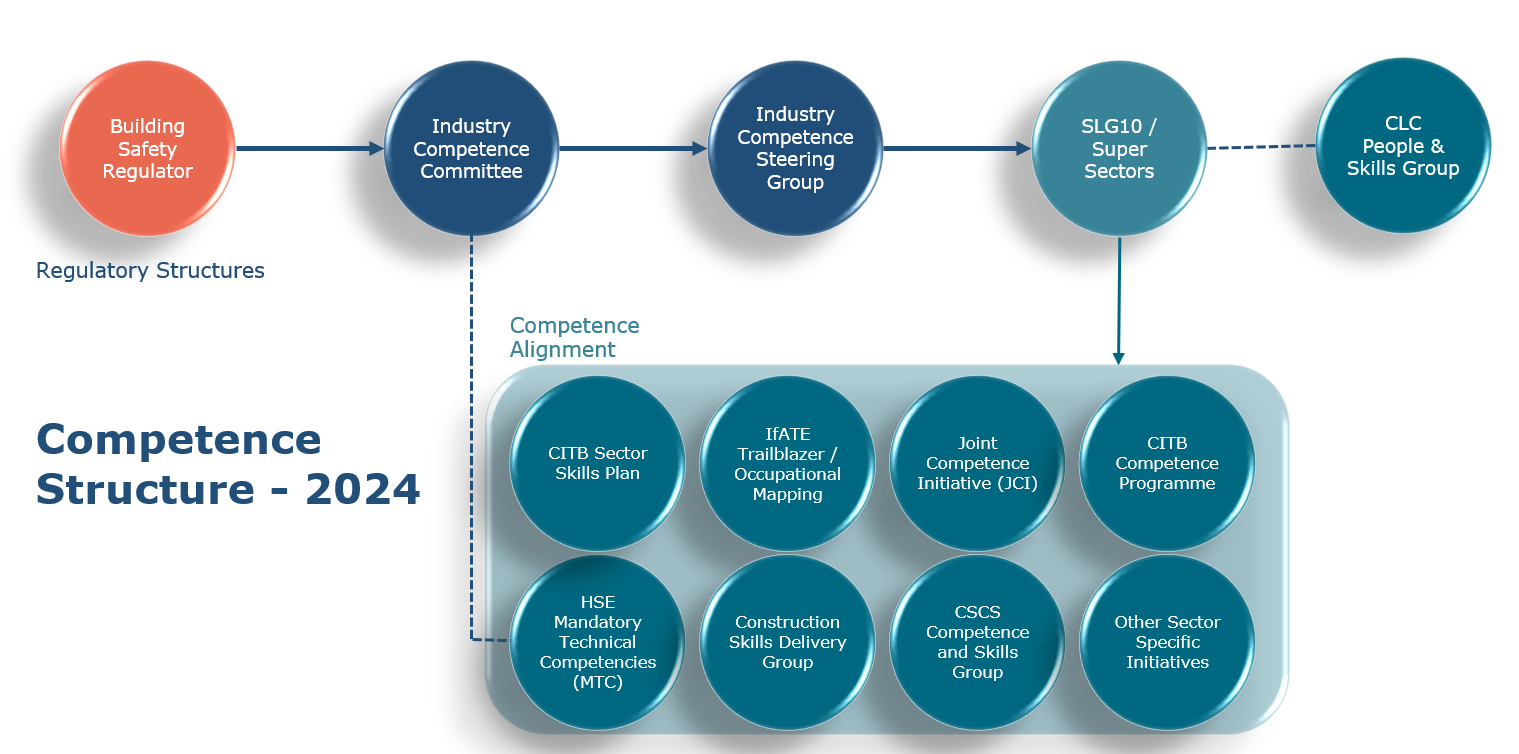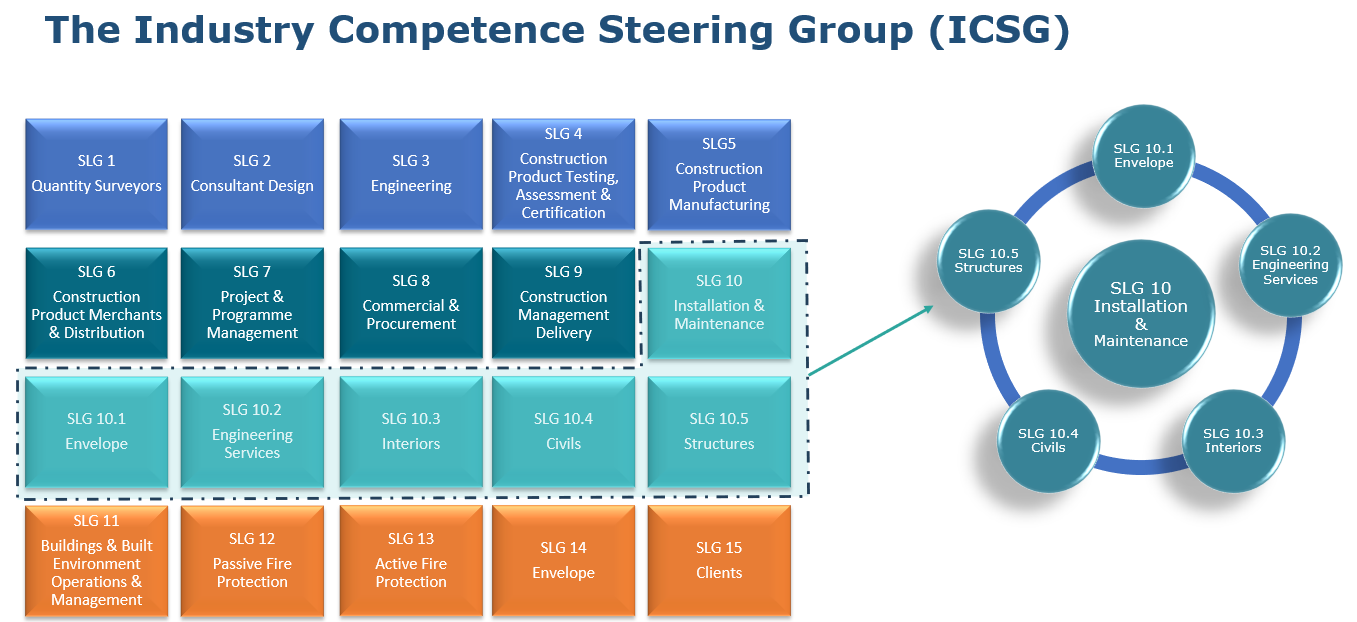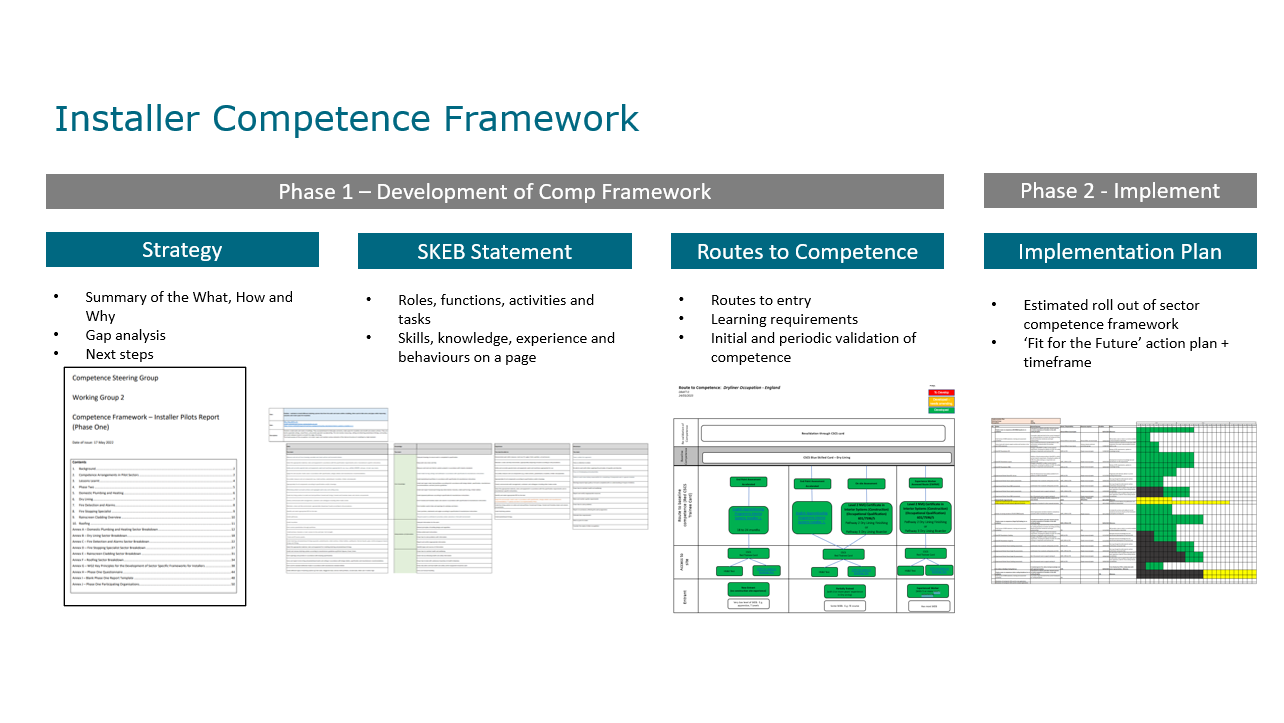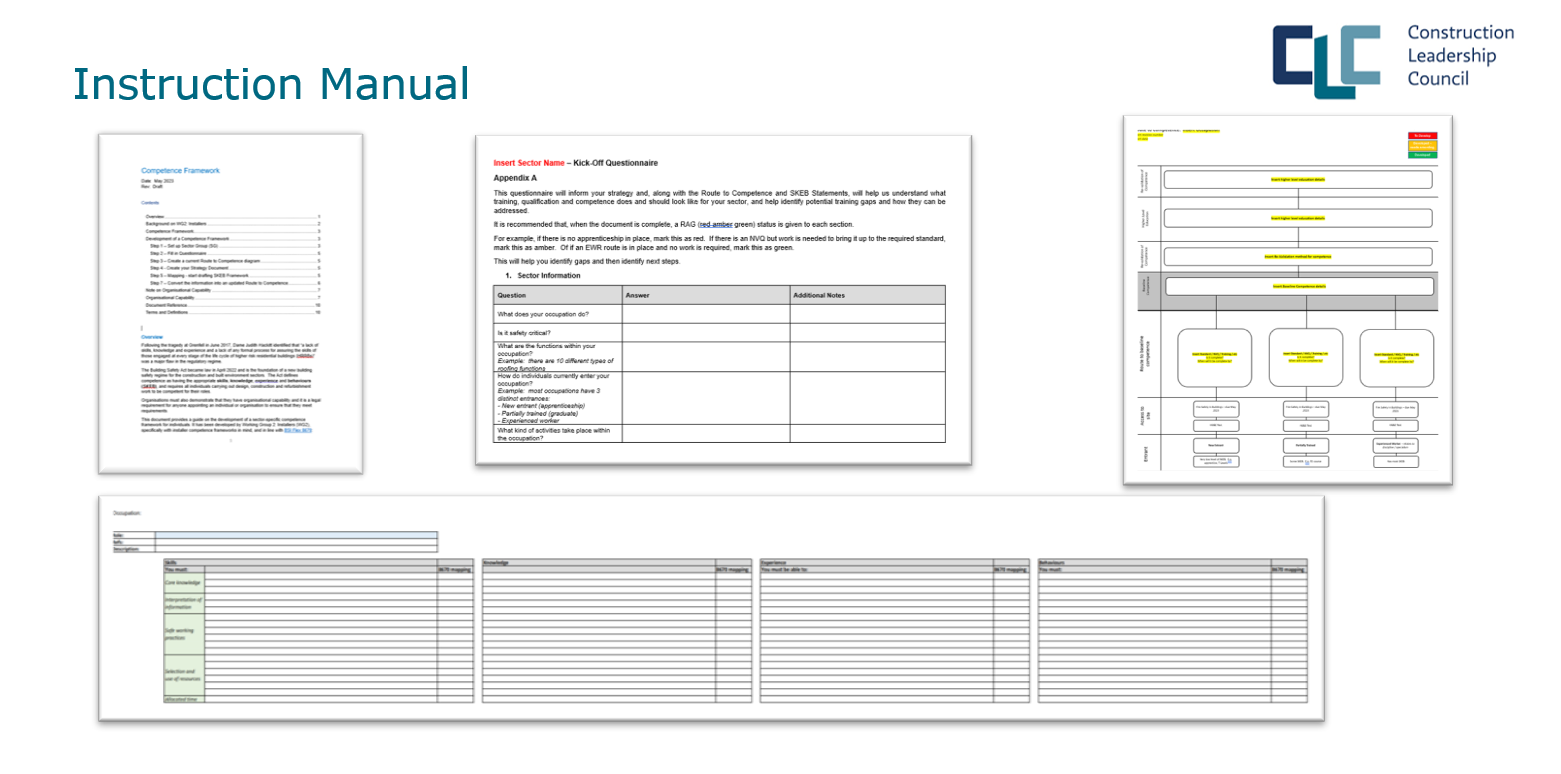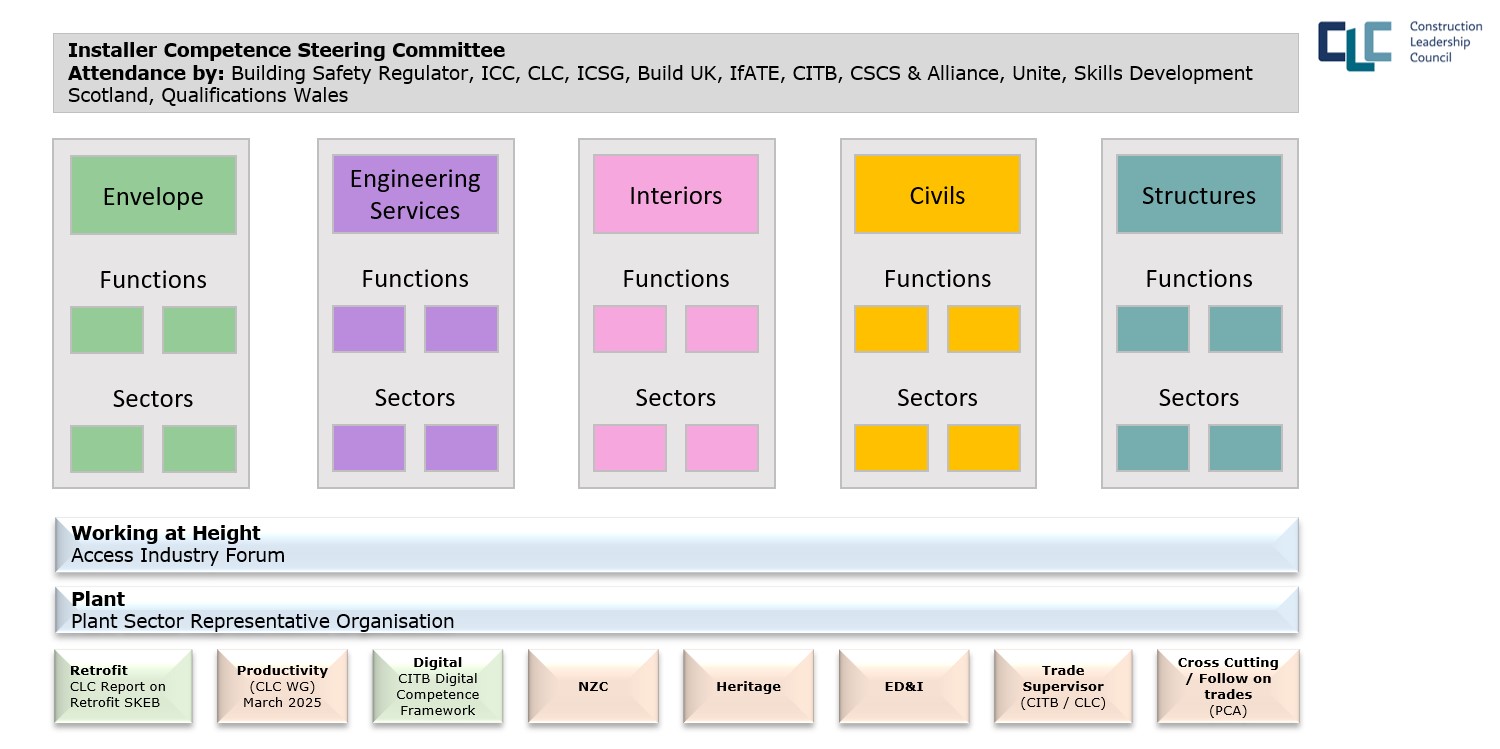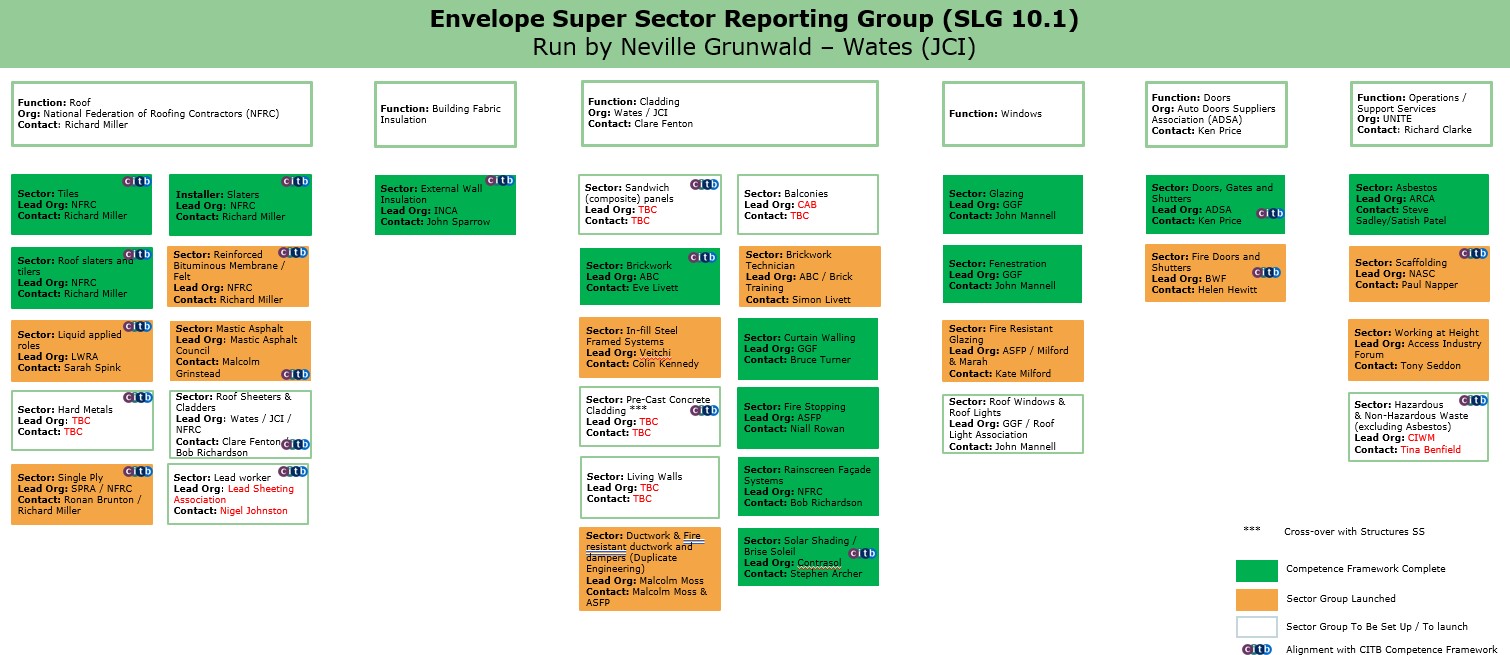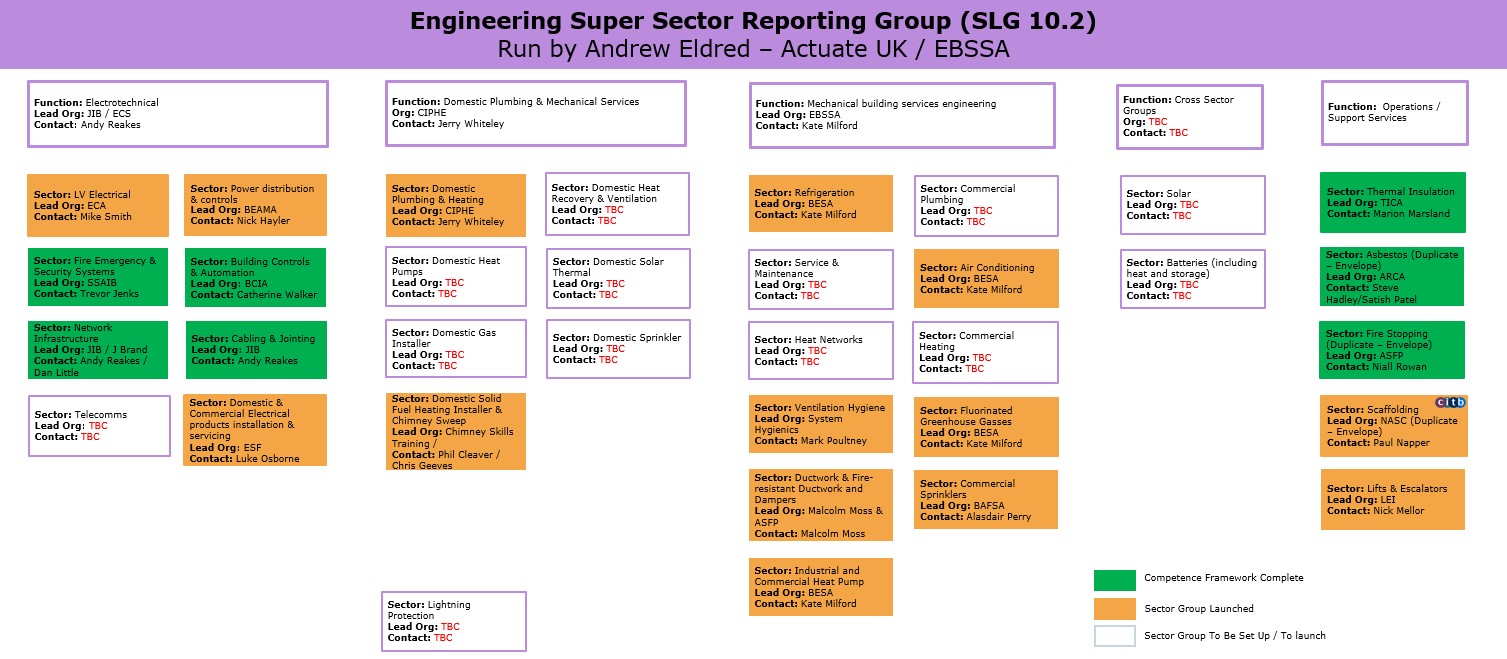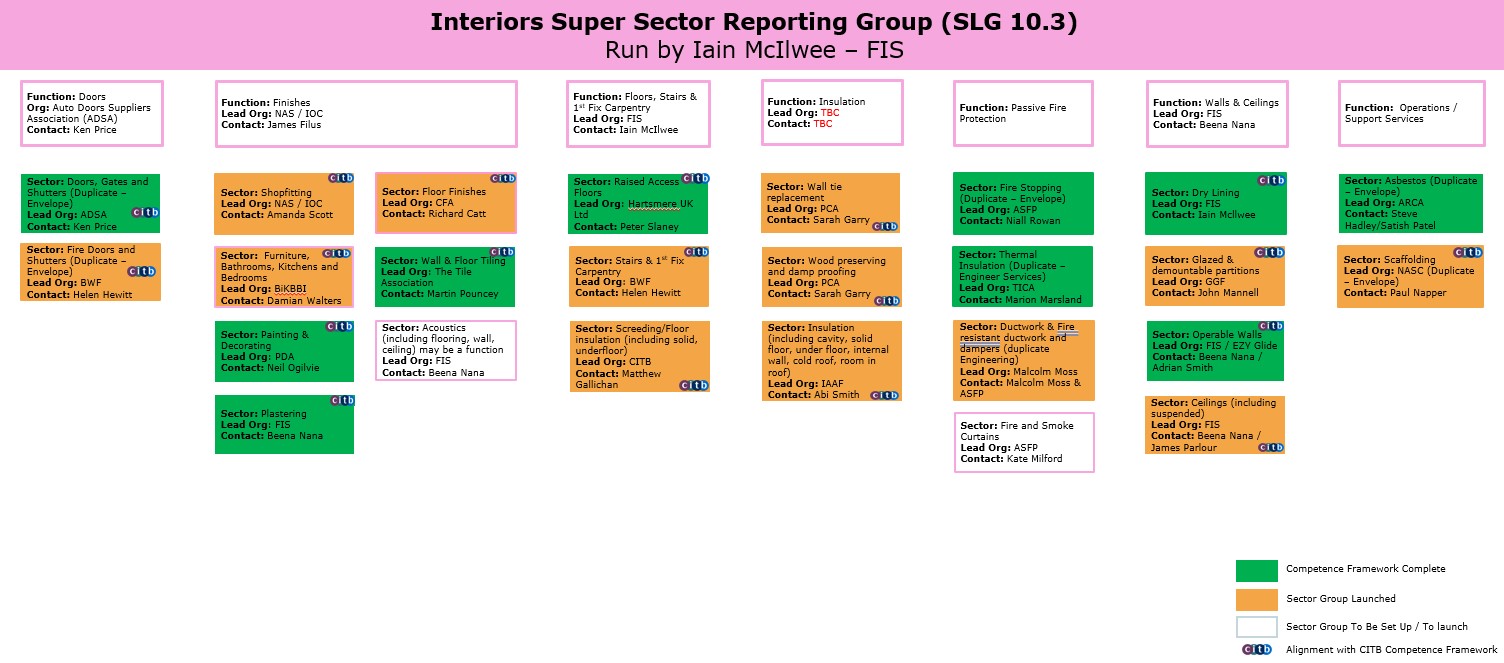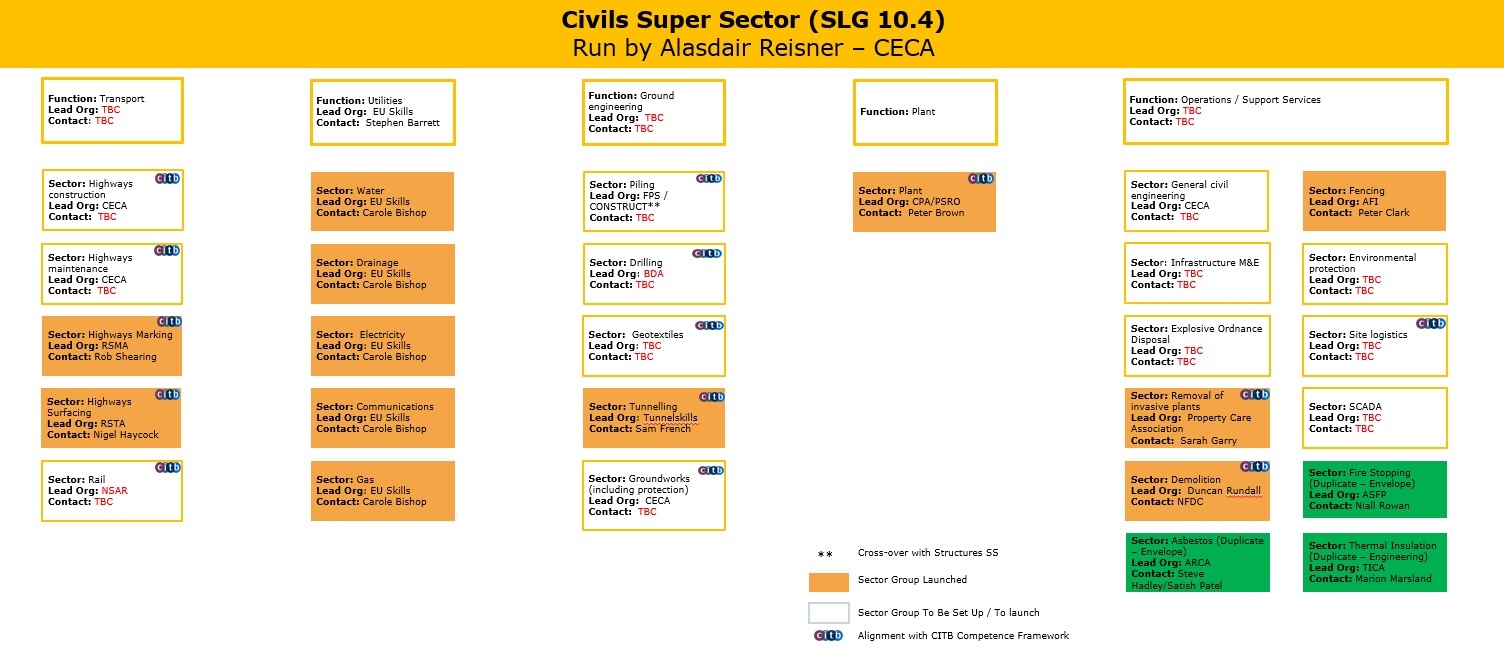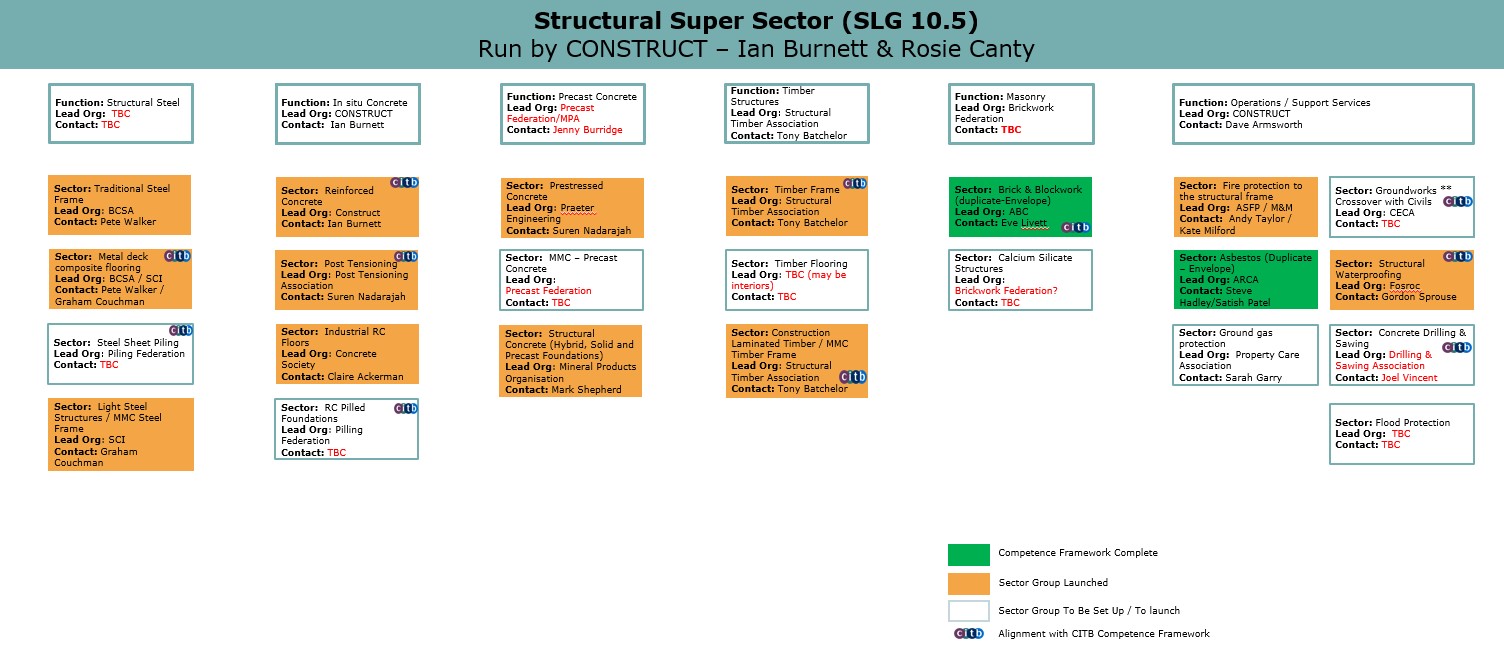Competence
1. Introduction
In her report, Building a Safer Future, Dame Judith Hackitt spoke of the industry’s approach to competence as being “fragmented, encompassing a range of disciplines and different competence frameworks even within one discipline and without reference to other interacting disciplines”.
The Building Safety Act 2022, together with supporting secondary legislation, has introduced a new regulatory regime, which requires the engagement of everyone working in the built environment, not just those involved in Higher-Risk Buildings (HRB).
This includes new duties on individuals and organisations that commission, design, construct or refurbish buildings, to ensure they comply with Building Regulations. Duty holders, both individuals and organisations, are required to be competent to undertake their roles.
2. Who, Why and What
Who: The Building Safety Regulator (BSR) in England is part of the Health and Safety Executive. The BSR was established under the Building Safety Act 2022 to:
- help professionals in design, construction, and building control, to improve their competence
- regulate higher-risk buildings
- raise safety standards of all buildings
What: There is a legal requirement to demonstrate competence, and this has been defined in the Building Safety Act 2022 and the Building Regulations etc (Amendment) (England) Regulations 2023 as:

Why: It has been confirmed that the BSR will audit the competence of those working on a higher-risk building, acting as the Building Control Body. For all other buildings, the Building Control Body will audit competence.
This page focuses on individual competence.
3. Dutyholder Roles
The Building Safety Act 2022 and secondary legislation defines new responsibilities for all those who design, build, own or manage HRB’s, these are in addition to existing duties under the Construction (Design and Management) Regulations (CDM).
Competence requirements are available for the Principal Designer and Principal Contractor role, with more information on Dutyholder requirements
PAS 8671 – Competence requirements for individuals who take on the Principal Designer role
PAS 8672 – Competence requirements for individuals who take on the Principal Contractor role
The Building Safety Regulator has provided guidance on both documents.
PAS 8673 – Competence Requirements for Safety in Residential Buildings
4. Industry Competence Steering Group
The Industry Competence Steering Group (ICSG) is a cross-sector working group, focussing on the development of competence frameworks for the built environment, raising standards. Set up in 2018 as the Competence Steering Group, several competence frameworks have been delivered. With the establishment of the Building Safety Regulator, a structure is in place to allow a focus on broader industry representation, engagement and alignment across multiple competence programmes. The re-formed ICSG has now been established as a working group under the Industry Competence Committee, one of three committees set up under the Building Safety Act, which reports to the Building Safety Regulator. See diagram depicting this structure below.
The ICSG, and those working within the Sector Lead Groups, are leading the development competence frameworks for individuals.
The structure of the Sector Lead Groups can be seen below.
Competence Steering Group outputs
Competence Steering Group outputs:
General CSG reports
• Setting the Bar
• A Higher Bar
WG1 – Engineers
• UK Standard for Engineer Competence
WG2 – Installers
• See work below
WG4 – Fire Risk Assessors
• Fire Competency Framework
• Industry Benchmark Standards
• Approved Code of Practice
• Risk Appraisal
WG5 – Fire Safety Enforcing Officers
• Competence Framework for Fire Safety Regulators
WG8 – Building Safety Managers
• PAS 8673:2022 Competence Requirements for Safety in Residential Buildings
WG9 – Site Supervisors
• Framework for the competence of Site Supervisors — This framework has been established for those individuals who are employed or contracted by the Principal Contractor and directly supports the Principal Contractor. It is for a site-based individual who could be classified as a:
- Site Manager
- Site Agent
- Construction Manager
- Site Supervisor
- Site Foreman
WG10 – Project Managers
• Competence Framework for Project Managers in the Built Environment
WG12 – Products
• Built Environment – Proposed Construction Product Competence Standard – White Paper
5. Sector Lead Group 10 – Installation and Maintenance
The CLC is providing support to Sector Lead Group 10 (SLG 10), established to address competence issues in the installation and maintenance sector, focussing on the development of competence frameworks.
Installation and Maintenance is comprised of millions of individuals and the skills structure can be difficult to navigate. SLG10 is the biggest programme of collaboration in the built environment today, bringing together Trade Associations, Sector Skills Bodies, Employers and Representatives from across the installation and maintenance industry, with a focus on improving standards.
Through their work, SLG 10 have identified that a competence framework for installers is made up of 4 key documents in 2 phases:
Phase 1 – the sector group develops the competence framework:
- A Strategy – defining the scope of the competence framework and an overview of the roles covered, identifying and calling out the gaps in current competence and any identified steps required to develop and implement a fully functioning competence framework.
- The SKEB Statements – outlining the skills, knowledge, experience and behaviours (SKEB) required to obtain competence in the role(s) covered by the framework.
- A Route to Competence – showing the path (or paths) to obtaining initial competence, and then maintaining, individual competence in the occupation(s) over time.
Phase 2 – once the Strategy, SKEB Statement and Route to Competence has been created, the Sector Group moves into an implementation group for the roll out of actions identified:
- An Implementation Plan – identifying what practical steps are required (as well as a timeframe) to allow the review/development of training/ assessment requirements to be implemented. It also includes what individuals in scope to the competence framework will need to do to come into compliance with its requirements.
An instruction manual has been created to guide the creation of competence frameworks, with the aim of industrialising this approach across all installer occupations.
SLG 10 Super Sector Programme
The Construction Leadership Council is aware of the important role that installers play in the Built Environment and supports the ICSG and SLG10 in the delivery of competence frameworks across installation and maintenance sectors. To do this, a programme of roll out was created, called the Super Sector Programme, with sectors captured in 5 distinct categories:
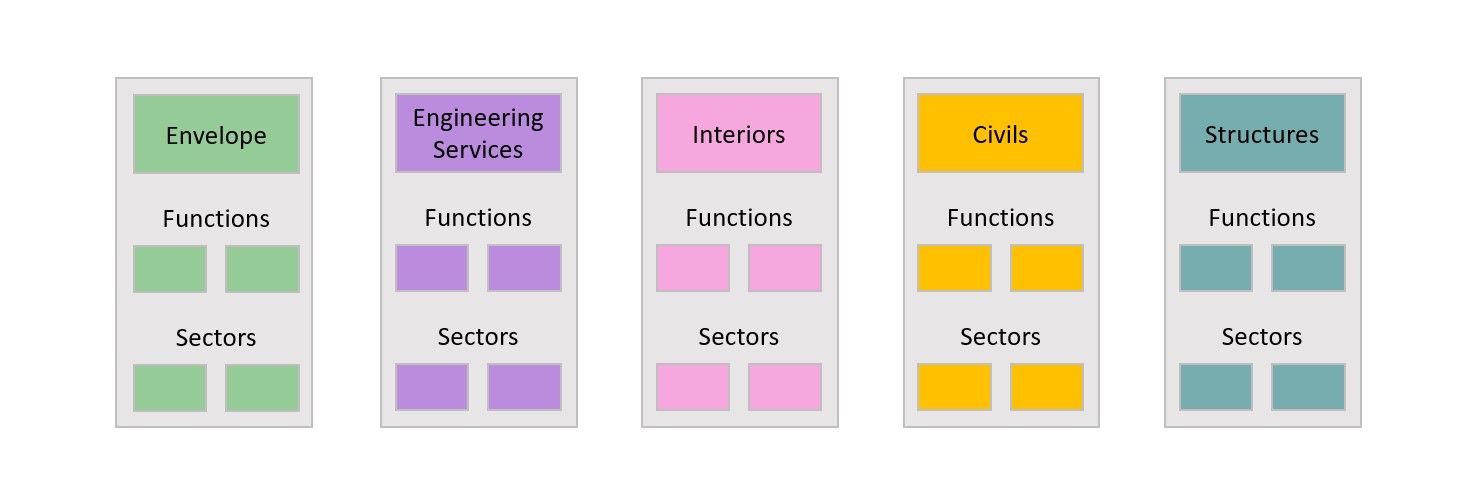
The Super Sectors is run like most programmes, with distinct supporting structures, reporting lines and processes which support the roll out of competence frameworks. Each Super Sector is led by an industry leader, linking back to Dame Judith Hackitt’s recommendation that the construction sector should “demonstrate more effective leadership in relation to developing a responsible approach to delivery building safety and integrity.” Function Leads are in place, providing further leadership and support, almost like a 1st line support function.
Most importantly, are the Sectors, led again by a leader in this occupation and made up of a diverse working group comprising of:
- Sector employers (reflecting different firm sizes, sub-disciplines and positions in the built asset life cycle)
- Member-led trade associations
- Trade union(s)
- Recognised sector skills bodies
- Professional institutions (where relevant)
- Manufacturers (as and where relevant)
Service Providers and other stakeholders that can be contacted for assistance as appropriate :
- CSCS / Alliance / partner card schemes
- Relevant certification bodies
- Relevant awarding organisations
- Other recognised sector stakeholders (e.g., other relevant sector bodies, safety charities, bodies representing owners, users and/or occupiers of built assets)
- Representatives from Government acting as observers (e.g., BSR, MHCLG, DBT, DESNZ, DfE, IfATE, UK devolved administrations)
This collaborative group is tasked with crafting a competence framework, utilising the Competence Instruction Manual and with the support of a CITB Developer (if in scope), with a structured timeframe for completion.
The full programme structure can be seen below:
Completed Installer Frameworks
Completed frameworks can be found here, with the SKEB Statement and Route to Competence included within the download.
- Dry Lining
- Fire Stopping
- Roofing, Tilers, Slaters and Roof Slaters & Tilers
- Thermal Insulation
- Asbestos
- Rainscreen Façade Systems
- Fire Detection and Alarms
- External Wall Insulation
- Brickwork
- Network Infrastructure
- LV Cabling and Jointing
- Curtain Walling
- Glazing
- Fenestraton
- Solar Shading
Disclaimer: The CLC does not own these frameworks and any feedback on these frameworks to be issued directly to working group.
5. Contacts
The Super Sector Programme needs leadership and assistance from Industry, especially for those sectors in the org charts above with a white box and a TBC as the Lead Organisation.
For any further information or the volunteering of assistance, please contact
Faye Burnett: Super Sector Programme Director at faye.burnett@macegroup.com
For ICSG contacts:
- ICSG Co-chairs:
- Hanna Clarke – hanna.clarke@constructionproducts.org.uk
- Gill Hancock – gill.hancock@apm.org.uk
6. Myth Busters
To be populated later

